You might not realize it, but routine care can be the key to revealing greater mobility in your life. By prioritizing regular check-ups, you can catch potential health issues early, allowing you to maintain your independence and improve your overall well-being. Imagine how targeted exercises and preventive therapies could transform your daily activities. As you consider the role of nutrition and mindfulness in this equation, you'll find that a personalized care routine can make all the difference. So, what steps can you take to start this journey toward enhanced mobility?
Understanding Mobility and Its Importance
Mobility plays an essential role in your daily life, influencing everything from your independence to your overall health. When you think about it, being able to move freely allows you to engage in activities you love, whether it's walking your dog, running errands, or simply getting around your home.
Good mobility isn't just about physical movement; it also impacts your mental well-being. When you feel capable of moving without pain or restriction, your confidence soars.
Understanding mobility means recognizing its various components, including flexibility, strength, balance, and coordination. Each aspect plays a significant role in how well you navigate your environment. For instance, maintaining strength in your legs and core helps you climb stairs and rise from a chair more easily.
Flexibility allows you to reach objects without straining, while balance keeps you steady on your feet, reducing the risk of falls.
Moreover, good mobility contributes to your overall health. Regular movement keeps your joints healthy, improves circulation, and supports a healthy weight, all of which are essential for avoiding chronic conditions.
When you're mobile, you're more likely to stay active, which can lead to improved mental health and enhanced social connections.
The Role of Routine Check-Ups
Routine check-ups play an indispensable role in maintaining your mobility and overall health. By scheduling regular visits with your healthcare provider, you're taking a proactive step toward identifying potential issues before they escalate. These check-ups allow your doctor to monitor your body's functions, assess any changes, and recommend necessary interventions.
During your appointments, your provider can evaluate your joints, muscles, and overall physical condition. You'll have the opportunity to discuss any concerns you might have, including pain, stiffness, or changes in mobility. This open communication helps your doctor tailor a care plan specifically for you, addressing any underlying issues that could affect your mobility.
Moreover, routine check-ups can facilitate early detection of chronic conditions, such as arthritis or osteoporosis, which can greatly impact your movement. By catching these issues early, you can implement strategies to manage them effectively, enhancing your quality of life and maintaining your independence.
Another important aspect of routine check-ups is the opportunity for preventive care. Your healthcare provider can recommend lifestyle changes, nutritional advice, or even vaccinations that support your mobility and overall well-being. By staying informed and engaged in your health, you empower yourself to make decisions that enhance your physical capabilities.
In essence, routine check-ups are a critical component of your healthcare journey. They not only help maintain your mobility but also guarantee you're positioned for a healthier, more active life.
Don't underestimate the importance of these appointments; they're key to revealing your full potential.
Benefits of Targeted Exercises
When you incorporate targeted exercises into your routine, you can greatly enhance your mobility and strength. These exercises focus on specific muscle groups and joints, helping to improve your overall functionality. By engaging in activities that are tailored to your needs, you'll notice improvements in flexibility, stability, and coordination.
One significant benefit of targeted exercises is injury prevention. Strengthening the muscles around your joints creates a protective buffer, reducing the risk of strains and sprains. This is especially important as you age or if you have a previous injury history. Additionally, these exercises help you develop better body mechanics, which can lead to more efficient movement patterns in daily life.
Targeted exercises also boost your confidence. As you see progress in your strength and agility, you'll feel more capable of tackling physical challenges. Whether it's climbing stairs, playing with your kids, or participating in sports, improved mobility can enhance your quality of life.
Moreover, targeted exercises can be easily adapted to fit your current fitness level. You can start with basic movements and gradually increase the intensity as you become stronger. This progressive approach not only keeps you motivated but also guarantees you're working within your limits to avoid burnout or injury.
Incorporating these exercises into your routine can lead to lasting benefits. You'll not only enhance your physical capabilities but also foster a sense of accomplishment and well-being.
Preventive Therapies for Enhanced Mobility
Preventive therapies play an essential role in maintaining and enhancing your mobility, complementing the benefits of targeted exercises. By incorporating various preventive strategies into your routine, you can proactively address potential issues before they become significant problems.
One effective approach is regular physical therapy sessions. A skilled therapist can assess your movement patterns, identify weaknesses, and create a tailored program to improve your strength and flexibility.
In addition to physical therapy, consider engaging in routine massages. These can help alleviate muscle tension, improve circulation, and promote relaxation. Regular massage therapy not only feels good but can also enhance your range of motion, making daily activities easier.
Another key preventive therapy is the use of mobility aids when necessary. Whether it's a cane, walker, or orthotic device, these tools can provide stability and support, allowing you to move with confidence. Don't hesitate to consult a healthcare professional to determine which aids might be right for you.
Incorporating stretching exercises into your daily routine is also important. Stretching helps maintain joint flexibility and prevents stiffness, making it easier to perform everyday tasks. Set aside a few minutes each day to focus on stretching major muscle groups.
Lastly, staying informed about your body and any changes you notice is crucial. If something doesn't feel right, don't ignore it. Addressing concerns early can prevent further complications and keep you moving freely.
Nutrition's Impact on Physical Well-Being
Nutrition plays an essential role in your physical well-being and overall mobility. By focusing on vital nutrients, staying hydrated, and incorporating anti-inflammatory foods into your diet, you can support joint health and reduce discomfort.
Let's explore how these dietary choices can enhance your daily movement and quality of life.
Essential Nutrients for Mobility
Your body's ability to move freely and comfortably hinges on a well-rounded intake of essential nutrients. These nutrients play a significant role in maintaining muscle strength, flexibility, and overall joint health. For instance, protein is important for muscle repair and growth. Make sure you include lean meats, fish, beans, and legumes in your diet to support your physical activity.
Don't overlook the importance of vitamins and minerals. Vitamin D and calcium are essential for bone health, while magnesium supports muscle function. Incorporate dairy products, leafy greens, and fortified foods to meet your needs.
Omega-3 fatty acids, found in fatty fish and flaxseeds, can help reduce inflammation, making movement easier and less painful.
Antioxidants, like those found in fruits and vegetables, combat oxidative stress that can hinder mobility. Aim for a colorful plate filled with berries, citrus fruits, and dark leafy greens.
Finally, don't forget fiber, which aids digestion and helps maintain a healthy weight, further supporting your mobility.
Hydration and Joint Health
Many people underestimate the importance of hydration when it comes to joint health. Staying well-hydrated helps maintain the synovial fluid that lubricates your joints, reducing friction and allowing for smoother movement. When you don't drink enough water, that fluid can become less effective, leading to stiffness and discomfort.
You mightn't realize it, but even mild dehydration can affect your body's performance. Your joints rely on proper hydration to absorb shock and prevent wear and tear. If you engage in physical activities, adequate hydration becomes even more vital, as it not only supports joint function but also helps with recovery.
To promote ideal joint health, aim to drink enough water throughout the day. A good rule of thumb is to drink at least half your body weight in ounces.
Additionally, consider consuming hydrating foods, like fruits and vegetables, which can contribute to your overall fluid intake.
Ultimately, prioritizing hydration is a simple yet effective way to support your joints and enhance your mobility. By making this small change in your daily routine, you're taking a significant step toward better physical well-being.
Anti-Inflammatory Foods Benefits
Incorporating anti-inflammatory foods into your diet can greatly boost your overall physical well-being, especially when it comes to joint health. These foods help reduce inflammation in your body, which can alleviate pain and stiffness in your joints. By choosing the right ingredients, you can enhance your mobility and feel more energetic.
Fruits like berries, oranges, and cherries are packed with antioxidants that fight inflammation.
Vegetables, especially leafy greens like spinach and kale, are also essential in your anti-inflammatory arsenal.
Don't forget about fatty fish, such as salmon and mackerel, which are high in omega-3 fatty acids and can markedly reduce joint discomfort.
Whole grains, nuts, and seeds play an important role too. They provide fiber and healthy fats, supporting overall health while keeping inflammation at bay.
Spices like turmeric and ginger are excellent additions, as they've natural anti-inflammatory properties.
Mindfulness and Mobility Connection
When you become aware of your body's movements and breath, you can enhance your mobility in powerful ways.
Practicing mindful stretching techniques not only increases flexibility but also fosters a deeper connection between your mind and body.
Awareness of Body Movement
Becoming aware of your body's movements can greatly enhance your mobility and overall well-being. When you tune into how you move, you can identify patterns that either support or hinder your physical capabilities. Start by paying attention to your posture while standing, sitting, or walking. Are you slouching, or are your shoulders relaxed and back? Noticing these details allows you to make small adjustments that can lead to significant improvements.
Incorporate mindfulness into your daily activities. Whether you're reaching for something on a shelf or bending down to tie your shoes, focus on the sensations in your muscles and joints. This awareness helps you recognize when you're overexerting yourself or when you're moving with ease. It can also prevent injuries by encouraging you to listen to your body's signals.
You might also try gentle stretches or movements while maintaining this mindfulness. This practice not only enhances your mobility but also fosters a deeper connection with your body.
Ultimately, becoming more aware of your movements can empower you to make better choices for your physical health and enhance your overall quality of life.
Breath and Mobility Enhancement
Breath plays an essential role in enhancing mobility and overall physical performance. When you focus on your breathing, you not only improve oxygen flow to your muscles but also create a deeper connection between your mind and body.
This mindfulness can lead to greater awareness of how you move, ultimately enhancing your mobility.
To harness the power of your breath, consider these key practices:
- Deep Breathing: Inhale deeply through your nose, allowing your abdomen to expand. Exhale slowly through your mouth, promoting relaxation.
- Breath Synchronization: Coordinate your breathing with your movements. For example, inhale as you prepare for a stretch and exhale as you execute it.
- Mindful Awareness: Pay attention to how your breath influences your physical state. Notice any tension or discomfort and adjust accordingly.
- Regular Practice: Incorporate breath exercises into your daily routine. Just a few minutes a day can greatly enhance your mobility.
Mindful Stretching Techniques
Mindful stretching techniques can greatly enhance your mobility by fostering a deeper connection between your body and mind. When you practice these techniques, you're not just stretching; you're engaging in a holistic experience that promotes awareness and relaxation.
Start by finding a quiet space where you can focus without distractions.
Begin with deep breaths to center yourself. As you inhale, visualize energy flowing into your muscles. When you exhale, release any tension you're holding.
Now, choose a stretch that targets a specific muscle group. As you move into the stretch, pay attention to how your body feels. Notice any tightness or discomfort, and adjust your position accordingly to guarantee you're comfortable.
Hold each stretch for at least 15 to 30 seconds, allowing your body to adapt. Use this time to reflect on your breath and the sensations you're experiencing.
This mindfulness practice not only increases flexibility but also enhances your mobility by integrating physical and mental awareness. Consistently incorporating mindful stretching into your routine can lead to improved movement patterns and greater overall well-being.
Overcoming Common Mobility Challenges
Mobility challenges can feel overwhelming, but with the right strategies, you can regain your independence. It's crucial to identify the specific issues you face, whether they stem from pain, weakness, or balance problems. Once you know what you're up against, you can take proactive steps to address these obstacles.
Here are some common mobility challenges and how you can tackle them:
- Joint Pain: Incorporate low-impact exercises like swimming or cycling to reduce stress on your joints while building strength.
- Muscle Weakness: Focus on strength-training exercises, using resistance bands or light weights, to gradually improve your muscle tone and endurance.
- Balance Issues: Practice balance exercises, such as standing on one leg or using a balance board, to enhance your stability and confidence when moving.
- Limited Range of Motion: Engage in regular stretching or yoga sessions to improve flexibility and ease stiffness, which can enhance your overall mobility.
Making small adjustments in your daily routine can also have a big impact. For instance, consider using assistive devices like grab bars or walkers when necessary, as they can provide extra support and help you feel safer.
Set realistic goals and celebrate your progress, no matter how small. Remember, overcoming mobility challenges is a gradual process, and persistence is key. With determination and the right strategies, you can enhance your mobility and enjoy a more active lifestyle.
Creating a Personalized Care Routine
Creating a personalized care routine is crucial for maximizing your mobility and independence. To start, assess your current abilities and limitations. Take note of activities that challenge you and those you enjoy. This understanding will help you tailor your routine effectively.
Next, set clear, achievable goals. Whether it's improving your balance, increasing your strength, or enhancing your flexibility, having specific targets keeps you focused. Break these goals into smaller, manageable steps. For instance, if you aim to walk longer distances, start with short walks and gradually extend the duration.
Incorporate a mix of exercises into your routine. Strength training, stretching, and cardiovascular activities all play significant roles in enhancing mobility. Choose activities that you find enjoyable to make your routine more sustainable. This could be dancing, swimming, or even gardening—anything that keeps you moving.
Don't forget to include rest and recovery. Your body needs time to heal and adapt, so schedule regular breaks. Listen to your body, and adjust your routine based on how you're feeling. If something doesn't feel right, don't hesitate to modify your activities.
Finally, consider consulting with a healthcare professional or a physical therapist. They can provide valuable insights and help you refine your routine based on your unique needs.
Staying Motivated on Your Journey
As you commence on this journey toward greater mobility, staying motivated can be just as important as the exercises themselves.
It's easy to feel discouraged when progress seems slow, but maintaining your enthusiasm is key to achieving your goals. Here are some strategies to keep your motivation high:
- Set Realistic Goals: Break your journey into small, achievable milestones. Celebrate each success, no matter how minor.
- Track Your Progress: Keep a journal or use an app to record your exercises and improvements. Seeing how far you've come can be incredibly motivating.
- Find a Support System: Surround yourself with friends, family, or a community that encourages you. Sharing your journey with others can provide accountability and inspiration.
- Mix It Up: Don't let your routine get stale. Experiment with different exercises or activities that excite you and keep you engaged.
Conclusion
Incorporating routine care into your life can markedly enhance your mobility and overall well-being. By staying proactive with check-ups and engaging in targeted exercises, you'll not only identify potential issues early but also foster a healthier, more active lifestyle. Remember, nutrition and mindfulness play essential roles too. Embrace these strategies, stay motivated, and create a personalized care routine that works for you. With dedication, you can access greater mobility and enjoy life to the fullest!



